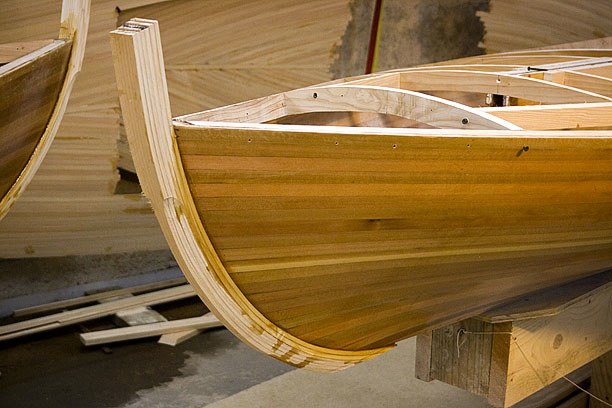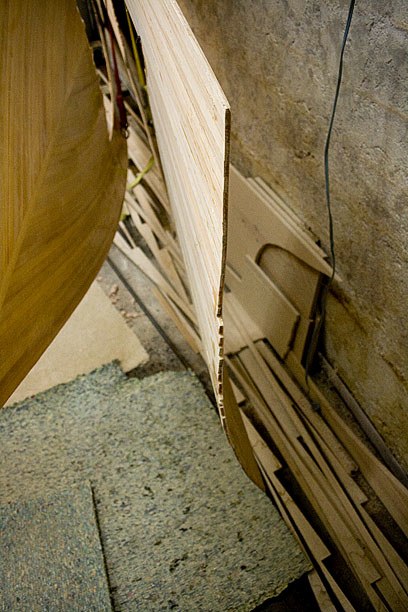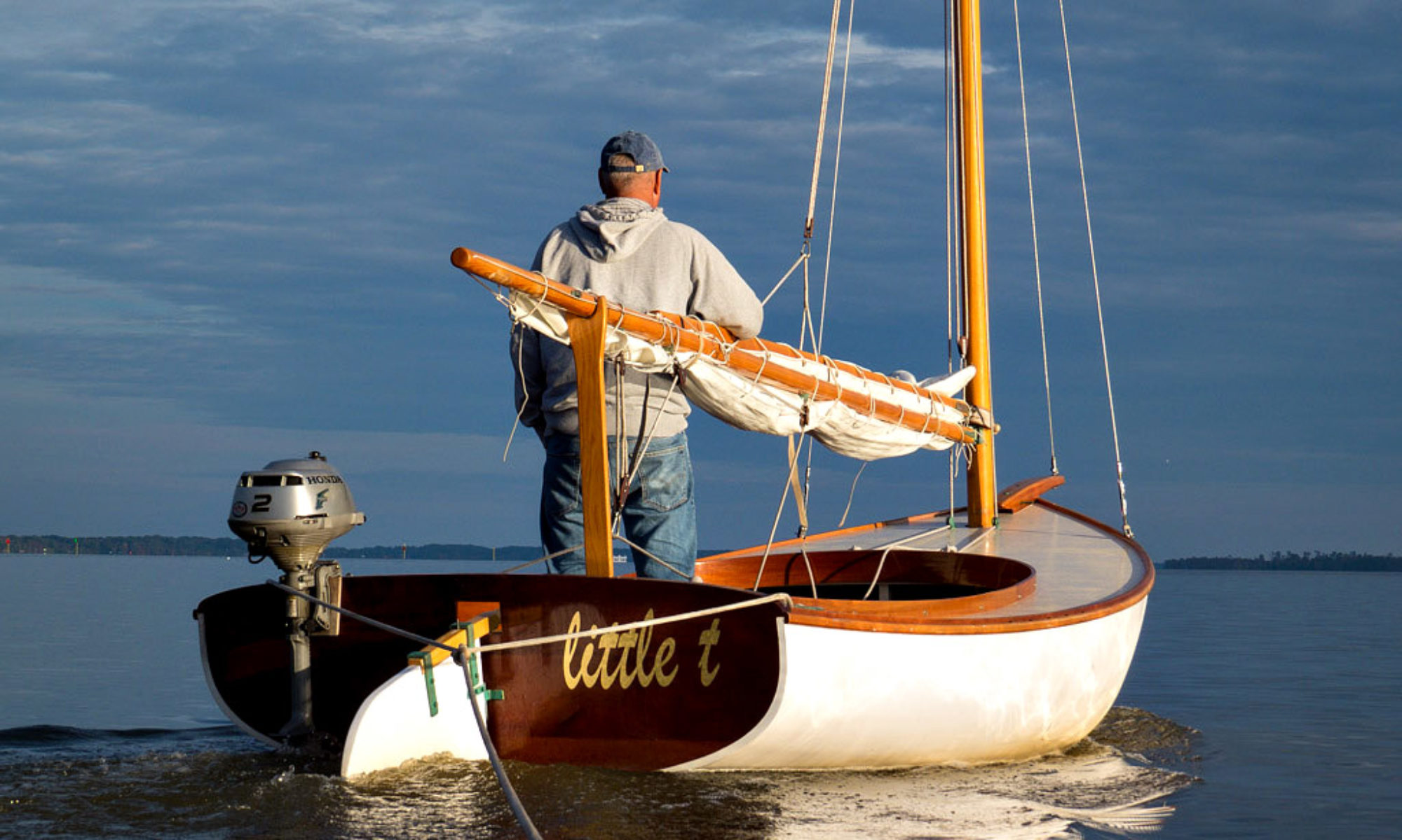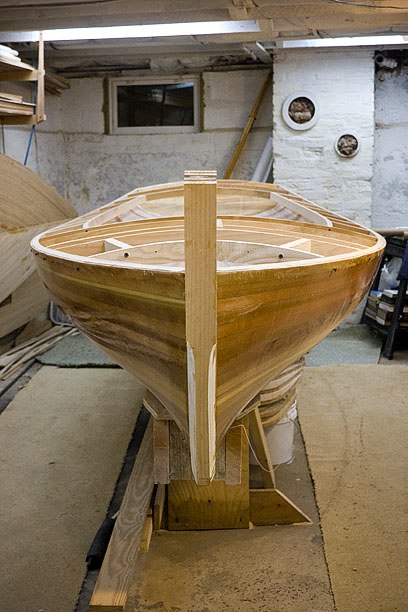Finishing the Centerboard Trunks
Continuing with the process of permanently attaching all the parts. This weekend it was the stems and mast steps.
I wanted to screw the bow stems in place from the inside. It just seems to make more sense. I try not to make any more holes than necessary through the outside of a boat, where they might develop leaks and invite rot. Doing that, though, means one screw needs to go beneath the mast steps, so the stems have to be attached first. That may be why Barto has you attach the stems from the outside – if you follow his build sequence, the steps would already be in place. His plans show counter sinking deep holes into the stems from the outside, then driving in screws and bunging the holes. Given the order I’ve been following, it’s easier to use long bronze screws and attach them from the relative safety of the inside.
 Two inch bronze screws, driven through the inner stem from the inside.
Two inch bronze screws, driven through the inner stem from the inside.
Terri remembered that these were the very first pieces I made that will actually become part of the boats. And so they were. They’ve been curled over a rafter all this time, gathering dust and waiting their turn. Finally, a year and five months later, their time has come.
Careful use of the table saw, followed by a grinder, brought out the rough shape, leaving them a little fat. They’ll get sanded down flush to the hull later, with a nice smooth entry and cutwater, blending with a brass stem band. They’ve also been left a little tall. The final profile will be cut and shaped once the toe rails and hardware are in place.
 Rough shaped stems, glued and screwed.
Rough shaped stems, glued and screwed.
The changing humidity continues to do amazing things. We’ve had a string of unusually warm humid days, interspersed with thunderstorms and heavy rain. I’ve had the windows open to let in some air. The basement is still cool, so all that moisture is condensing on everything. The good news is the transoms are now straight again – a little beyond, actually. The bad news is the decks, which only a month ago were a little too curved, are now very curved – in the opposite direction. I know they will straighten out again; I just hope it’s soon. In about two weeks it will be time to attach them. You can seen the moisture on the floor in some of the pictures. The walls are sweating.
 Decks warped in the opposite direction. These are supposed to be
Decks warped in the opposite direction. These are supposed to be
curved inward. If laid on the boats now, they’d look like gull wings. Weird.
That’s one thing I have learned the hard way with this project: If you glass one side of a piece of wood, do the other side at the same time, unless you’re sure you’ll get to the other side done before the season changes. Otherwise, be prepared to play games with temperature and humidity, even in a controlled environment.
melonseed skiff, mellonseed skiff, melon seed, mellon seed





